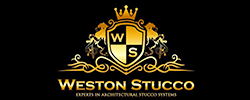|
Many people are confused by what the difference is between real cement based stucco and synthetic stucco. In the 1970’s we started hearing about stucco that didn’t crack and had more color consistency than the stucco we were using. Then the word EIFS (Exterior Insulation Finish System) was thrown around and the confusion really started. EIFS is for energy efficiency using foam boards or other products to achieve better insulation values and is a whole other discussion. Much can be learned online regarding EIFS Systems. One of the problems is that we have so many names for synthetic stucco such as; Acrylic Stucco, Synthetic Stucco, Plaster Finish, and manufacturer names such as; MX Acrylic, Dryvit, Sto, Synergy, Thoro etc. Here is the difference:
Synthetic Stucco is made from acrylic resins and is very similar to paint. They have an aggregate added to replicate the look of stucco without some of the inherent problems of real cement stucco. Different size sands are used to achieve different finishes as traditional stucco uses different size aggregates. Once on the wall it would be difficult for anyone to tell the difference between Acrylic Stucco and a painted cement stucco wall. The key here is painted. It is fairly easy to tell the difference between real and synthetic, if not painted. Even though, the products are supposed to be similar when they are installed they are worlds apart in physical makeup and functionality. Real Stucco uses natural materials and is cement and lime based. Synthetic stucco is the acrylic resin based using no cement or lime. The similarity is the sand or aggregate used. The functional aspect is also important. Synthetic stucco stops water from coming into the wall and are either characterized as waterproof or at least water-resistant. Cement Stucco typically dries hard enough to keep water out, but the idea is not to necessarily keep water out of the stucco. More importantly it can penetrate the stucco and then naturally wick out and dry by being highly vapor permeable. Synthetic Stucco can keep and hold moisture if it can find a way in. This is usually through the windows, doors, or roof lines. Because of water related issues the manufacturers have tried to use co-polymer resins that have more vapor permeability than earlier synthetic stuccoes. Cement Stucco is very rigid and is susceptible to cracking. This has been by far the number one problem associated with stucco. Cracks are caused by many variables all related to movement and can be read about in earlier Blogs or online. Stucco also tends to dry differentially by how long the moisture stays on the wall. Cement Stucco typically is darker if it dries slowly and lighter if it dries quickly. In hot, dry, or windy conditions the entire building can be lighter in color than intended; conversely in cloudy, moist, or wet conditions the entire building can be darker than intended. In addition, walls can dry differently just based on shading. The north side of the house can dry darker than the south side. Even shading from the plank, trees, or other structures can telegraph on to a wall and cause discoloration. Synthetic Stucco was introduced to solve these problems and for the most part they did. Since Synthetic Stucco is a lot like paint it dries more evenly. Because of the nature of the resin it moves more than cement stucco and is not as susceptible to cracking. Keep in mind nowhere did I say “solve or eliminate” the problems. Problems and their manifestation are all a result of degrees - how much movement, how much water intrusion. The other question was of course cost. A Price was always the motivation of using traditional cement stucco. It is relatively inexpensive. Synthetic Stucco changed that and made the cost significantly higher. Still, when stacked up against other claddings, both these materials are still very affordable. So let’s go through and recap these products: Synthetic Stucco Toronto 1. Made of Copolymer Resin 2. Uses sand or another aggregate to achieve the look of Cement Stucco 3. Resistant to water 4. Crack resistant 5. Colorfast 6. Comes wet in pails 7. Spread with an acrylic trowel 8. More appropriate for dark colors 9. Able to have smooth to very heavy textures 10. More expensive than cement stucco 11. Can be used over brown coat or in EIFS (Exterior Insulation Finish System) Traditional Cement Stucco Toronto 1. Made of Cement and Lime 2. Uses different size sand to achieve different finishes 3. Highly vapor permeable 4. Comes dry in bags 5. Spread with steel trowels and float 6. More of a “natural look” 7. Less expensive As you can see there are more differences than first meet the eye when making a decision which product to use. Cost is a factor and how the materials function and ultimately look are certainly things that need to be addressed. Do your research, look at the budget, and make the right decision based on your design needs and expectations of all involved.
3 Comments
2/19/2020 11:57:08 am
It's good to know that synthetic stucco is similar to paint. My sister has been telling me about how she wants to get stucco walls for her new house. I'll share this information with her so that she can look into her options for professionals who can help her get some stucco installed.
Reply
5/5/2021 01:40:34 am
As one of the most sought-after outside finishes for businesses and homes, there are, without a doubt, a number of advantages related to stucco. There will be no regret when you used stucco in your house.
Reply
Leave a Reply. |
Weston Stucco Toronto Blog!AuthorHuseyin Alanci / Administrator Archives
January 2016
Categories
|

 RSS Feed
RSS Feed